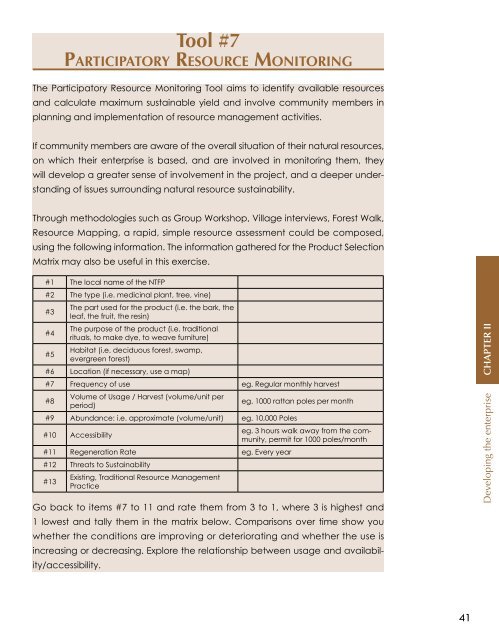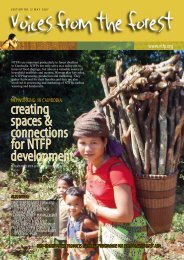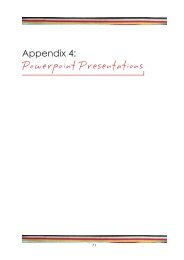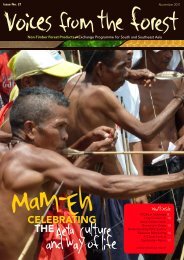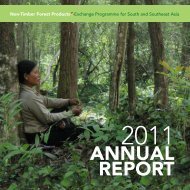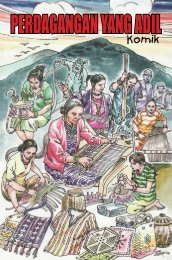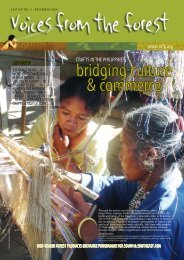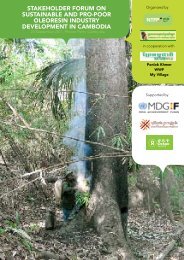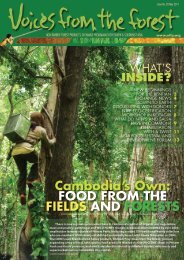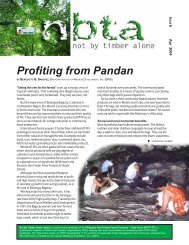Download PDF - Non-Timber Forest Products Exchange Programme
Download PDF - Non-Timber Forest Products Exchange Programme
Download PDF - Non-Timber Forest Products Exchange Programme
Create successful ePaper yourself
Turn your PDF publications into a flip-book with our unique Google optimized e-Paper software.
Tool #7<br />
Participatory Resource Monitoring<br />
The Participatory Resource Monitoring Tool aims to identify available resources<br />
and calculate maximum sustainable yield and involve community members in<br />
planning and implementation of resource management activities.<br />
If community members are aware of the overall situation of their natural resources,<br />
on which their enterprise is based, and are involved in monitoring them, they<br />
will develop a greater sense of involvement in the project, and a deeper understanding<br />
of issues surrounding natural resource sustainability.<br />
Through methodologies such as Group Workshop, Village interviews, <strong>Forest</strong> Walk,<br />
Resource Mapping, a rapid, simple resource assessment could be composed,<br />
using the following information. The information gathered for the Product Selection<br />
Matrix may also be useful in this exercise.<br />
#1 The local name of the NTFP<br />
#2 The type (i.e. medicinal plant, tree, vine)<br />
#3<br />
The part used for the product (i.e. the bark, the<br />
leaf, the fruit, the resin)<br />
#4<br />
The purpose of the product (i.e. traditional<br />
rituals, to make dye, to weave furniture)<br />
#5<br />
Habitat (i.e. deciduous forest, swamp,<br />
evergreen forest)<br />
#6 Location (if necessary, use a map)<br />
#7 Frequency of use eg. Regular monthly harvest<br />
#8<br />
Volume of Usage / Harvest (volume/unit per<br />
period)<br />
eg. 1000 rattan poles per month<br />
#9 Abundance: i.e. approximate (volume/unit) eg. 10,000 Poles<br />
#10 Accessibility<br />
eg. 3 hours walk away from the community,<br />
permit for 1000 poles/month<br />
#11 Regeneration Rate eg. Every year<br />
#12 Threats to Sustainability<br />
#13<br />
Existing, Traditional Resource Management<br />
Practice<br />
Go back to items #7 to 11 and rate them from 3 to 1, where 3 is highest and<br />
1 lowest and tally them in the matrix below. Comparisons over time show you<br />
whether the conditions are improving or deteriorating and whether the use is<br />
increasing or decreasing. Explore the relationship between usage and availability/accessibility.<br />
Developing the enterprise CHAPTER II<br />
41


